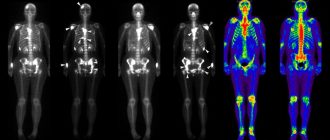A blood test for prostatitis is one of the first studies of the patient’s condition. It is not able to provide sufficient accuracy for making a diagnosis, but in combination with the symptoms it can indicate to the doctor what examinations the patient should be referred for. When examining blood, a differential study of various indicators and components occurs.
Types and results
Blood test indicators for prostatitis are not informative enough for a final diagnosis. Nevertheless, this diagnostic method is sufficient for the initial detection of pathologies of the male genitourinary system. Depending on its results and cumulative symptoms, as well as palpation of the prostate gland, the urologist has the opportunity to prescribe more accurate examinations to identify a specific disease.
For prostate pathologies, a blood test includes several types of studies:
- general clinical;
- biochemical;
- hormone research;
- bacterial;
- prostate-specific antigen (PSA) test.
General
For prostatitis, a general analysis will show the following results:
- The number of leukocytes is more than 9×10^9.
- More than 4 band leukocytes in the field of view.
- Hemoglobin level is below 110 g/l.
- The erythrocyte sedimentation rate (ESR) is more than 10-15 mm/hour.
However, the erythrocyte sedimentation rate is a non-core parameter; even normally it can exceed 20 mm/hour.
Biochemistry
A biochemical blood test for prostate diseases is carried out to study the following indicators:
- urea;
- glucose;
- alkaline phosphate (ALP);
- AlAT and AsAT;
- sodium, potassium and chlorine;
- total cholesterol and bilirubin;
- total protein and protein fractions;
- gamma-glutamyl transpeptidase (GGT);
- creatinine
PSA
This indicator is not the main one for diagnosing prostate inflammation and is prescribed only if cancer is suspected. Normally, the PSA level does not exceed 2.5 ng/ml, but the value increases with age. Therefore, it is necessary to evaluate it only knowing the patient’s age. In addition, with prostatitis the indicator increases slightly and does not exceed 10 ng/ml. Although it is used to diagnose cancer, this blood test can be used in chronic prostatitis to determine the effectiveness of treatment. A decrease in level will indicate the success of therapy, while an increase or lack of decrease will indicate ineffectiveness or relapse of the disease.
Hormones
Hormone research examines the following indicators:
- Testosterone and dihydrotestosterone (the main parameter for prostate diseases).
- Sex hormone binding globulin (SHBG).
- Follicle stimulating hormone (FSH).
- Prolactin.
- Estradiol.
Bakposev
Most diseases of the genitourinary system occur due to infection, so a blood test is performed to detect the following sexually transmitted infections:
- genital herpes;
- chlamydia;
- papillomavirus;
- ureaplasmosis;
- cytomegalovirus.
The research is carried out using one of the following methods:
- polymerase chain reaction (PCR);
- enzyme immunoassay (ELISA);
- immunofluorescence.
Preparation and collection
The material is delivered in the morning and is carried out from a vein in the elbow joint. Before it, it is forbidden to eat food, drink coffee and strong tea; it is better to drink only a small amount of still water. You should also stop smoking. A week before this, you should abstain from sexual intercourse. Failure to comply with these recommendations may result in poor test accuracy.



